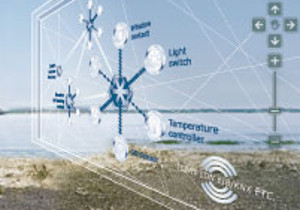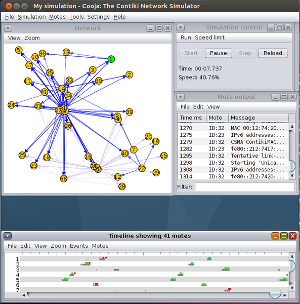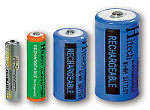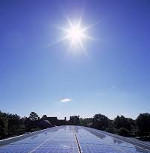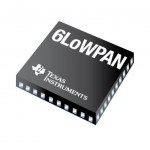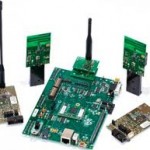Today, Internet-of-Things and wireless-sensor networks are finding an increasing range uses of consumer, industrial and medical applications. Such networks often employ a large number of distributed nodes, without interconnecting cables, which can’t practically be connected to the power grid – and it is attractive to keep the need for battery recharging and replacement to an absolute minimum through the use of efficient, careful design choices as well as ambient energy harvesting technology.
Power-efficient wireless sensor nodes can take advantage of some form of energy harvesting power supply, employing energy sources such as solar photovoltaic, vibrational energy harvesters or thermoelectric generators to minimise maintenance and extend battery life – possibly completely eliminating batteries entirely – if the power consumption of the system is small enough and a capacitor is employed for energy storage.
Energy harvesting management ICs that manage the accumulation of energy in a capacitor over a period of time to enable short bursts of relatively high power consumption, such as when a node wakes up and transmits a burst of data, are particularly well suited to low-power wireless sensor nodes.
In many applications, solar photovoltaic are the most familiar choice for low-power sensor and telemetry nodes operating outdoors, for example in agricultural and meteorological applications.
Energy-efficient wireless network nodes can be engineered using modern RF microcontroller system-on-chip devices, turning on and off sensors and peripheral hardware devices when they are not required or putting them into low-power sleep modes when not actively in use.
Similarly, the RF transceiver can be switched into a very-low-power sleep state until the microcontroller decides that a transmission of collected sensor data is required. The microcontroller can then wake up the radio, perform the required transmission, and the radio goes back to sleep.
In some cases, a burst of data transmission across the wireless network might only occur when a small, intermittent energy-harvesting power supply has accumulated enough energy in a capacitor to power a transmission.
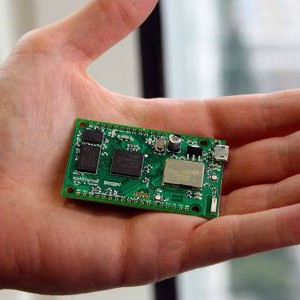
With most of the components of the system – the microcontroller, radio and sensors – each kept offline or asleep for the largest practical amount of time, efficiently designed wireless sensor nodes may achieve operating timescales as long as years off a single battery.
Today’s typical wireless RF microcontroller system-on-chips targeted at Internet-of-Things applications typically consume about 1-5 microwatts in their “sleep” state, increasing to about 0.5-1.0 milliwatts with the microcontroller active, and up to about 50 milliwatts for brief periods during active radio transmission.
As an example of the active development in this field, the International Electrotechnical Commission has recently ratified the new ISO/IEC 14543-3-10 standard, specifying a Wireless-Short-Packet protocol optimised for ultra-low-power and energy-harvesting nodes in wireless sensor networks.
It is the first and only existing standard for wireless applications that is also optimised for energy harvesting solutions, aimed at energy-harvesting wireless sensors and wireless sensor networks with ultra-low power consumption.
For a small, low-power embedded device that receives a reasonable amount of sun each day, a moderately small solar panel is perfectly capable of supplying sufficient power, on average, to run a small, basic wireless network node consisting of a microcontroller, some sensors and an embedded low-power Wi-Fi, Bluetooth or 802.15.4/ZigBee radio transceiver.
In many applications, solar photovoltaic is the most familiar, relatively mature choice for low-power network nodes operating outdoors or under good indoor light conditions. However, other technologies suitable for harvesting small amounts of power from the ambient environment exist. For example, a wireless sensor node set up to monitor bearing wear in a generator could employ a piezoelectric crystal as a vibrational energy harvester, converting motor vibration into usable energy.
As an example of a controller IC one may use for the power supply in a small solar powered system, the Linear Technology LTC3105 is a high-efficiency step-up DC/DC converter that can operate from input voltages as low as 225 millivolts, with a built-in maximum power point controller (MPPC). As well as solar cells, this device is well suited to other low voltage, high impedance energy harvesting transducers such as thermoelectric generators.
For some systems it is also practical to use batteries alone – for example, lithium-ion, lithium-polymer or nickel metal-hydride batteries – and rely on user intervention to simply recharge and replace the batteries where needed.
Lithium-ion batteries provide good energy density and many convenient cycles of repeated charge and discharge, but these batteries require precise control to avoid over-discharge or over-charge conditions which can permanently damage the battery.
Despite their risk of fire and damage if mishandled, lithium-ion batteries provide very good discharge current capability, high energy density, and the ability to survive many repeated charge cycles embedded inside devices which are charged and used without their battery being replaced.
Libelium’s WaspMote platform is an open-source wireless sensor network platform specifically focussed on the implementation of low-power modes, allowing individual battery-powered nodes (or “motes”) to be completely autonomous and to run for many months or years without maintenance.
Depending on the duty cycle, types of sensors and the radio used, it is possible for a WaspMote node to run for as long as five years on a single battery, making WaspMote one good example of a hardware and software platform that is well suited to the use of solar power and other energy harvesting technologies in energy-efficient wireless sensor networks and Internet-of-Things applications.
We’ve only just scratched the surface of the options available to ensure your IoT nodes are powered effectively, and here at the LX Group we have the experience and expertise to solve your IoT power problems right through to a whole system to meet your needs.
Getting started is easy – join us for an obligation-free and confidential discussion about your ideas and how we can help bring them to life – click here to contact us, or telephone 1800 810 124.
LX is an award-winning electronics design company based in Sydney, Australia. LX services include full turnkey design, electronics, hardware, software and firmware design. LX specialises in embedded systems and wireless technologies design.
Published by LX Pty Ltd for itself and the LX Group of companies, including LX Design House, LX Solutions and LX Consulting, LX Innovations.

